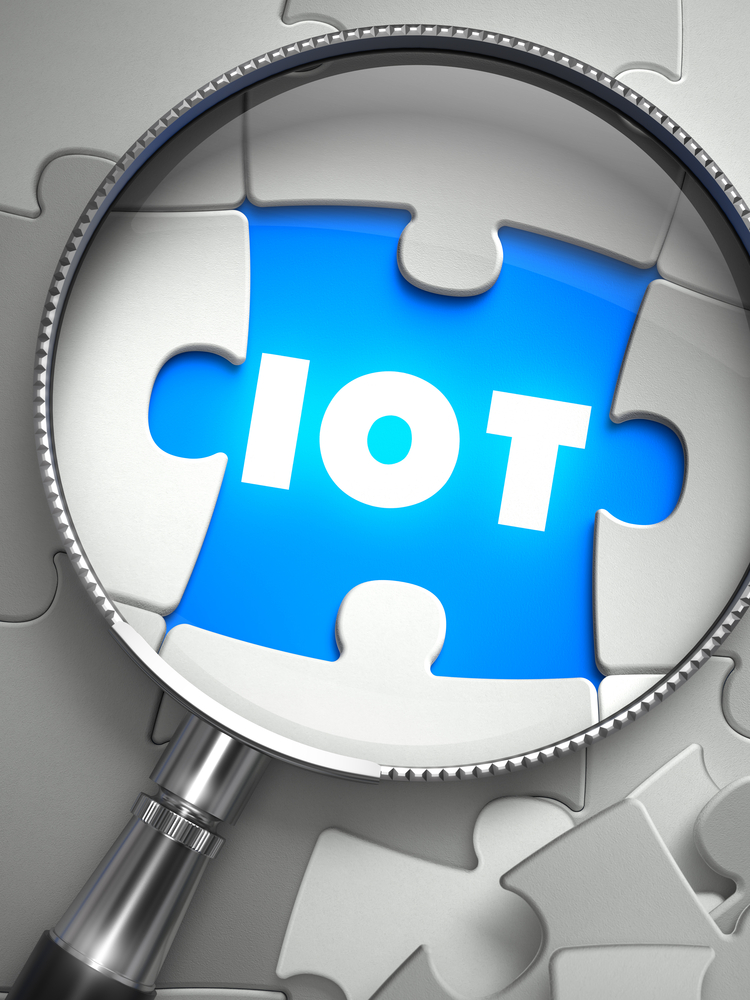4 min read
What is the Internet of things and how can it be used?
 Sagiss, LLC
:
Published: July 13, 2023 Updated: October 1, 2024
Sagiss, LLC
:
Published: July 13, 2023 Updated: October 1, 2024

The Internet Of Things (IoT) Creates Benefits, Challenges, And Opportunities For Businesses
Sagiss, LLC : Published: July 13, 2023 Updated: June 1, 2024

The Internet of Things (IoT) is one of the fastest areas of growth in IT. The market for IoT devices was valued at $544 billion in 2022 and is projected to grow to $662 billion in 2023 and $3.3 trillion by 2030. Nearly every industry is deploying IoT devices.
For large enterprises, nearly a third of all devices connected to their networks are IoT enabled, but it’s not just large businesses. Businesses of all sizes are deploying IoT in sectors, including retail and hospitality, finance and insurance, manufacturing, transportation, healthcare and more.
IoT is changing how businesses operate and providing significant opportunities to manage and monitor resources, improve productivity and track critical data. As part of the modernization and digital transformation of your business, IoT is poised to play an even greater role in the future.
Today, companies are deploying smart climate controls and smoke detectors, sensors and tracking devices for machinery and production equipment, remote cameras, smart speakers, and smart rooms. In the future, more devices than ever will be connected to your network. While providing significant benefits, there are also challenges.
What Does IoT Mean?
IoT is a cellular network containing computers, digital equipment and networks. This device is capable of handling many functions including sensors on thermostats or factory machines, printers, televisions, phones and refrigerators. From Amazon Echo devices to specialized logistics applications, IoT uses can be varied. IoT is gaining momentum as businesses and consumers use the benefits, which will be discussed below.
What Are the Disadvantages of the Internet of Things?
Before we go deeper to learn more about the internet of things, it is important to address the disadvantages. Amongst other significant issues are technical and privacy concerns, but other nebulous long-term impacts must also be considered. Overreliance on smart technology may cause mental complacentness among young generations.
User Advantages of IoT
IoT is also very important to businesses as it provides valuable information to the user for a wide number of purposes. Consider how mobility can improve the workplace – especially when a person needs extra time to do other work like selling and technical tasks. IoT has great potential to benefit businesses which have workers in these areas. The IoT implementation was able to increase the employee engagement by improving:
BENEFITS OF IOT IN MODERN BUSINESSES
Businesses of all sizes are already seeing significant benefits from deploying IoT solutions.
INCREASING EFFICIENCY
83% of organizations that have incorporated IoT devices say they have improved efficiency. IoT allows monitoring and management remotely, saving time and resources. Here are a few examples of how IoT can improve efficiency and productivity:
· Remote monitoring and management of devices that are located off-site, eliminating the need to travel to remote locations.
· Real-time inventory tracking with IoT provides associates and customers with information on product availability or delivery status.
· Sensors can track vehicles and assets to provide optimal routing for faster delivery. IoT devices can also detect driving behavior or excessive idling that drives up fuel costs and shorten equipment life.
· IoT can monitor customer in-store behavior to determine the most efficient merchandising strategies.
REDUCING COSTS
IoT helps optimize business equipment and equipment, reducing maintenance costs and unplanned downtime. For example:
· Predictive maintenance using IoT sensors can reduce breakdowns by up to 75%, eliminating many costly repairs.
· Smart cameras can record video and upload it automatically to the cloud, eliminating the need for more expensive closed-circuit cameras.
· Smart tags, such as RFID, can track inventory and assets, providing more accurate inventory tracking and reducing waste or lost inventory.
· IoT temperature and light controls can reduce energy bills.
· IoT device control of equipment and appliance can control when devices are switched on or off to reduce operational costs and extend equipment life.
IMPROVING SAFETY
IoT devices can improve workforce safety. Besides tracking physical assets to prevent theft or damage, businesses are also using IoT in several different ways to protect workers and goods, such as:
· Connected devices can monitor doors and windows, and then alert you in case of unauthorized entry.
· Remote temperature monitoring can flag increases or decreases in warehouse temperature that can impact the safety and quality of produce or goods.
· Sensors on forklifts can detect potential collisions and automatically slow or stop equipment.
CHALLENGES OF MANAGING IOT DEVICES IN THE WORKPLACE
Along with the benefits, there are also challenges when it comes to deploying and managing IoT applications. Connecting more devices to the internet and your networks requires a robust infrastructure to account for security, increased amounts of data, and device monitoring and maintenance.
SECURITY
IoT has created more opportunities for monitoring, managing and optimizing. However, it has also created more attack vectors for cybercriminals. Hackers are also getting more sophisticated in exploiting the additional vulnerabilities IoT creates.
Provisioning and authentication controls are necessary to protect devices. Leaving devices unprotected can lead to problems. In one case, cybercriminals were able to penetrate the network of a casino by hacking an IoT device measuring the water temperature in a fish tank!
DATA STORAGE
IoT devices are expected to generate the largest share of new data in the next few years. By 2025, analysts forecast that more than 75 billion IoT devices will be in use. Organizations will need to examine their IT infrastructure and cloud resources to ensure they can handle the increased amount of data storage and analysis.
DEVICE MONITORING AND MAINTENANCE
By adding an increasing number of IoT devices, it can quickly become overwhelming to manage them all. While IoT devices are efficient, they also require monitoring and management. For battery-powered IoT devices, power management becomes a concern, requiring monitoring and maintenance. Making sure your infrastructure supports the necessary monitoring and management is essential.
IoT technology is also evolving rapidly. Vendors release software and firmware updates regularly which need to be factored into maintenance schedules.
THE FUTURE OF IOT IN BUSINESS
IoT can produce significant benefits, but it also adds a layer of complexity to managing businesses. As more devices are connected, the complexity only increases.
Sagiss can help. We provide managed IT, managed security, and managed cloud services to create robust solutions for the technology you need to power your business. Sagiss can help you deploy and manage IoT in your workplace for optimal performance and security.
Contact Sagiss today to discuss your IoT and IT infrastructure needs.
